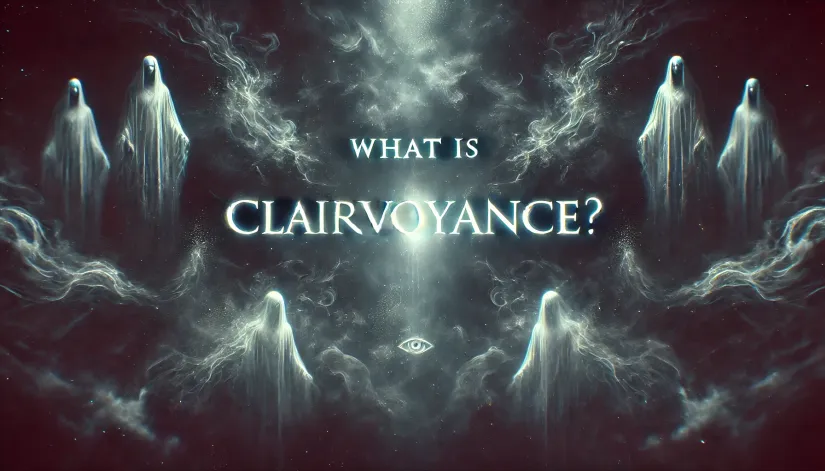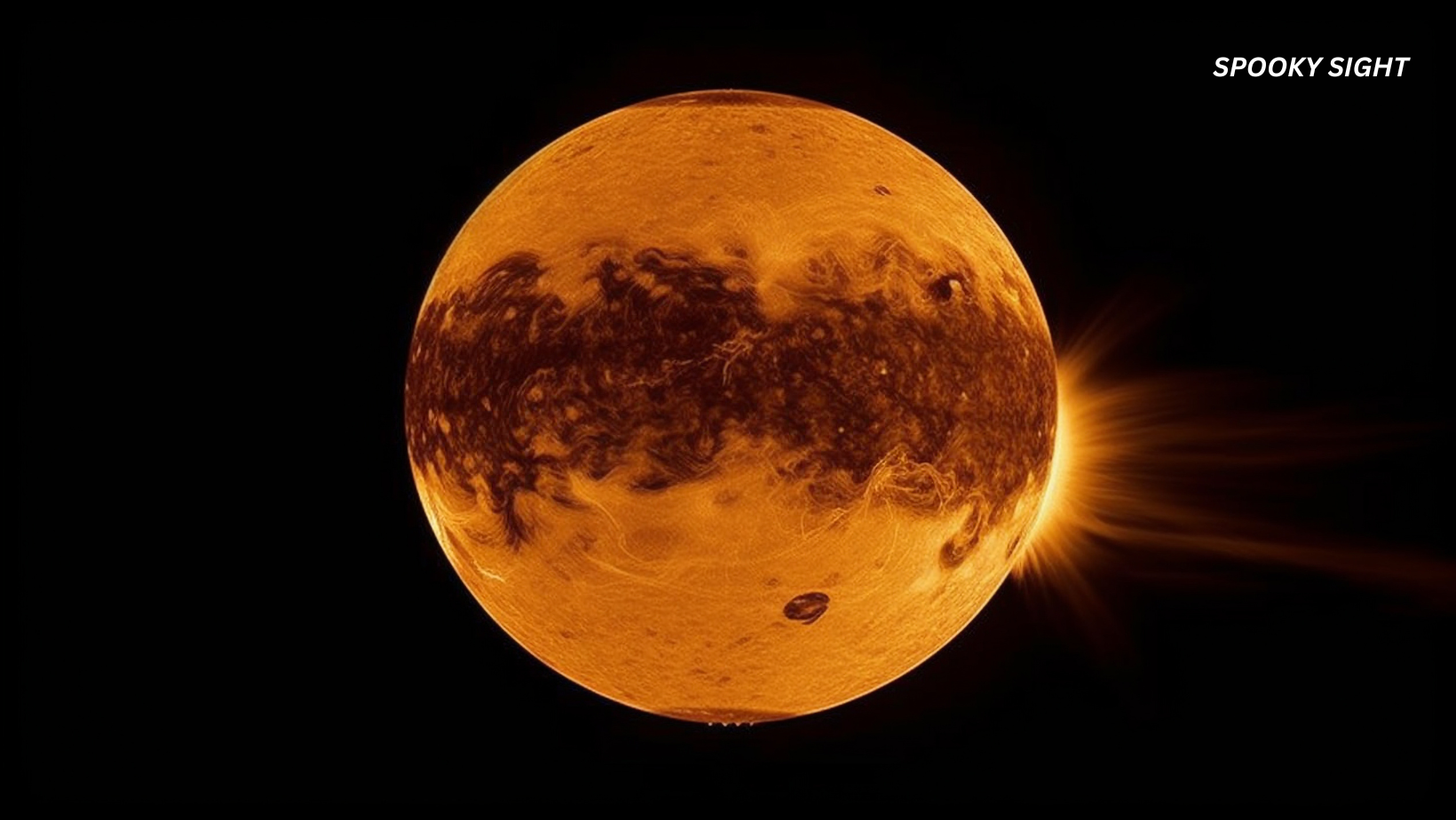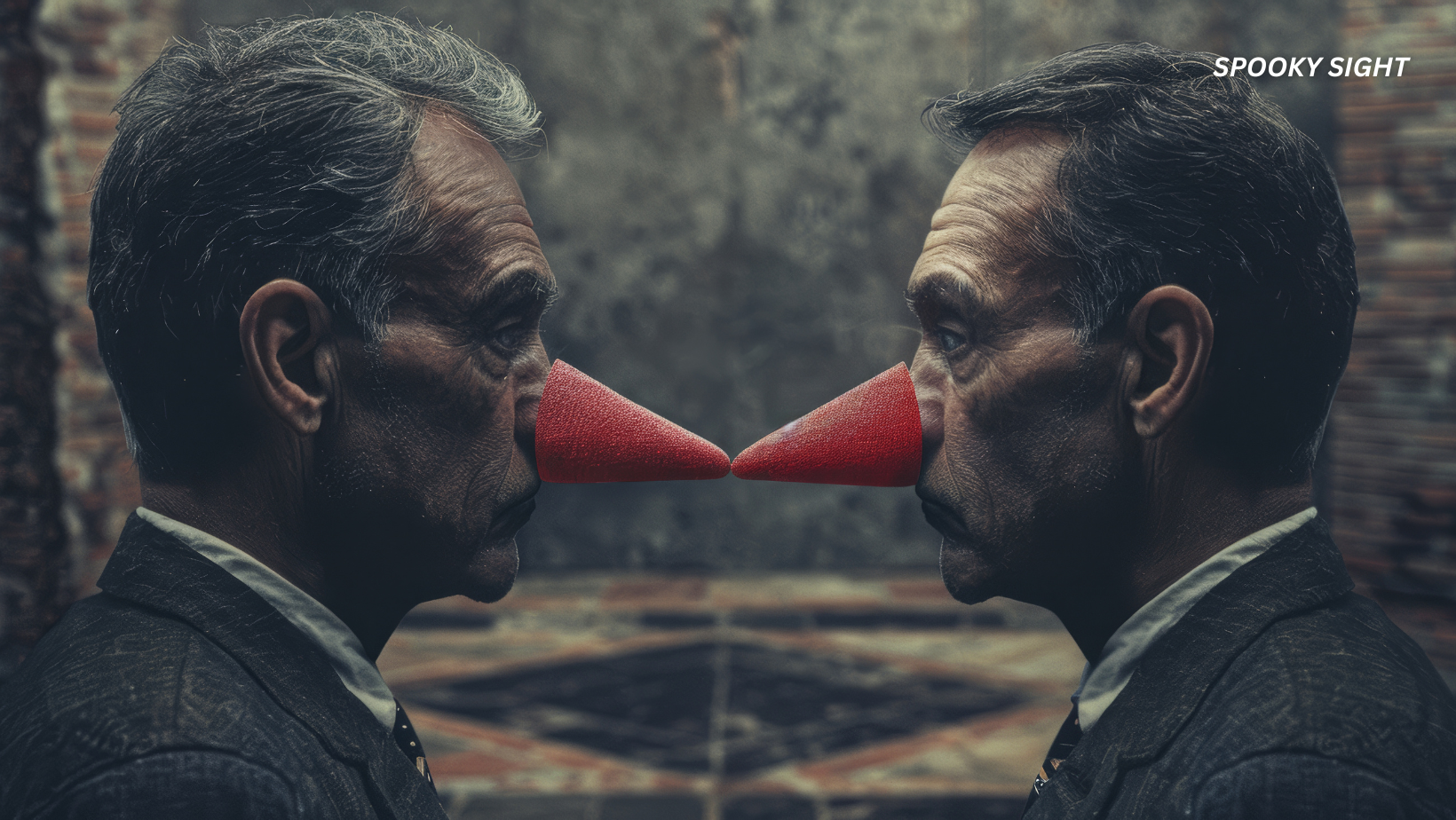Ever wonder how some people claim to “see” things beyond the ordinary? How they claim to witness events from the past (things that have already happened)? Others even say they can predict events that are yet to come.
This unique ability is part of the extrasensory perception (ESP) or the “sixth sense.” It’s called clairvoyance.
However, while some view them as gifted, others label them as frauds.
Perhaps it’s time to explore the world of clairvoyance and decide for yourself. Is it real? Or just a clever trick? Can anyone develop this kind of power, or is it limited to a select few?
In this article:
What is Clairvoyance?
In simple terms, clairvoyance is a type of extrasensory perception. What does that mean? Perception can go beyond the five physical senses we all know—touch, sight, taste, smell, and hearing. At least in theory.
Those who claim to have this unique gift are called “clairvoyants.”
As you can imagine, clairvoyance is often associated with the paranormal. With the parapsychology.
However, believe it or not, it also has some very deep historical roots. Some of the first mentions of people with this ability are from ancient Greece, where Oracles were worshiped for their potential to tap into hidden knowledge. More on that later.
Etymology and Pronunciation
The word “clairvoyance” comes from the French words clair (meaning “clear”) and voyance (meaning “seeing”). It is pronounced as /klair-VOY-uhns/ (with an emphasis on the second syllable). It literally means “clear seeing.”
Pretty straightforward, right? This reflects the idea that a clairvoyant has clear sight into things that aren’t visible to most people.
What is an Example of Clairvoyance?
Clairvoyance might sound a little out there. Though, you’d be surprised at how many everyday situations people associate with this ability. So, what is an example of clairvoyance in action?
Let’s break it down into something more relatable:

Everyday Examples
Imagine this: You’re hanging out with a friend, and they suddenly blurt out, “I feel like something bad is happening to my sister right now.” Later, they find out someone they love (so they share a special connection) had been in an accident at the exact same time.
This type of experience can be classified as clairvoyance. A sudden, clear vision of something happening far away or before it actually occurs.
Another example? Finding lost objects. Some clairvoyants claim they can “see” where lost items are by simply getting a mental image of the object’s location (like suddenly visualizing a set of missing keys on the kitchen counter).
Finally, there’s remote viewing. The term became pretty popular in the late 20th century. Remote viewing is the ability to see events, people, or objects happening somewhere else—sometimes even in real-time—without physically being there.
In some instances, individuals have used remote viewing to help law enforcement find missing persons (or suspects). Though, this kind of clairvoyance remains highly debated.
Historical Examples
Speaking of clairvoyance being around for millennia, its roots can actually be traced back to ancient Greece (and possibly even earlier).
People from all over used to travel to Delphi (on the slopes of Mount Parnassus) to seek advice from the famous Pythia. Why? Because they believed she (yes, the Oracle was always a woman) could channel visions from the god Apollo and see everything—from personal affairs to matters of state.
According to Herodotus’ “Histories,” King Croesus of Lydia famously consulted the Oracle before waging war against Persia. The Oracle’s cryptic prophecy? “If you cross the river, a great empire will fall.”
SpookySights recommends:
- The Real Story of Ed and Lorraine Warren: Paranormal Investigators or Frauds?
- How to Connect with Someone Who Passed Away: Practical and Spiritual Methods
- The Hierarchy of Angels: The Nine Choirs and the Hidden Order of Celestial Beings
Croesus took this as a sign to attack—only to find that it was his own empire that fell, not Persia.
Another famous figure often tied to clairvoyance is Nostradamus (the 16th-century French astrologer). He was well-known for his cryptic and poetic quatrains and was frequently referred to as both a prophet and a clairvoyant.
He wrote most of his predictions in Les Prophéties (1555). And, according to many, his writings predicted significant events like the Great Fire of London in 1666, the rise of Napoleon Bonaparte, and even World War II.
What is the Meaning of Strong Clairvoyance?
Not all clairvoyants experience their abilities the same way. Some might get only brief, occasional flashes, while others report consistent, vivid visions that seem to come with remarkable detail.
So, what separates strong clairvoyance from more casual or weaker instances?
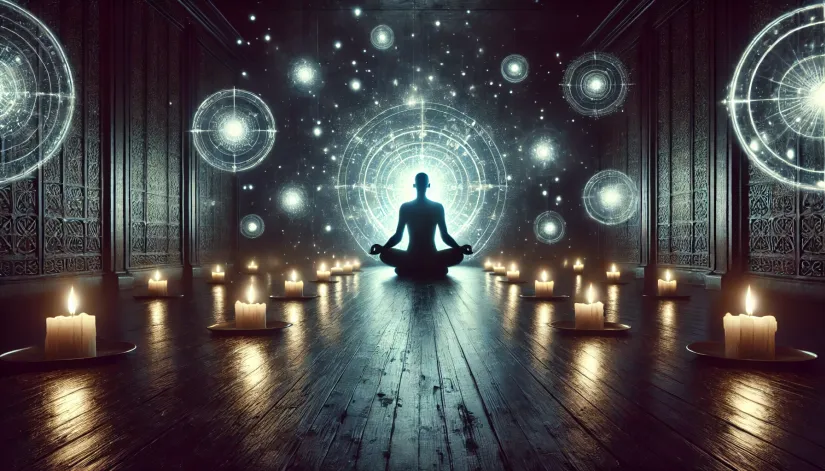
The Five Levels of Clairvoyance
Clairvoyance exists on a spectrum. However, there isn’t an official, universally accepted scale for how strong (or weak) clairvoyance can be.
On one end, you have those who experience fleeting, sporadic insights—quick flashes or vague sensations that might be hard (if not impossible) to interpret.
This sort of clairvoyance feels more like a gut feeling. Maybe backed by short, fragmented mental images. It might also happen randomly. Sometimes with no real way to control when or how it occurs.
On the other end of the spectrum, there are strong clairvoyants. They may experience consistent and detailed visions, often with striking clarity. What they “see” tends to be a lot more precise. For them, the visions happen more frequently and are usually more reliable.
For example, they may be able to describe someone they never met in great detail. Or provide an exact timeline for an event. Or even pinpoint relevant locations.
Edgar Cayce (one of the most famous American clairvoyants from the 20th century) is a prime example of this. Known as the “Sleeping Prophet,” Cayce could enter a trance-like state and receive visions about pretty much everything. From people’s health and their past lives to future global events.
So, based on how clairvoyants typically describe their experiences, we at SpookySight put together an “informal scale.” Again, it’s nothing official (or widely recognized), but it may be enough to at least give you an idea of the different levels of clairvoyance:
| Level | Type | Manifestation |
|---|---|---|
| Basic | Gut Feelings or Intuition | Experienced as a strong hunch or internal “knowing” without visual input. |
| Intermediate | Symbolic Clairvoyance | Appears in dreams or mental flashes of symbols and abstract imagery. |
| Advanced | Mental Clairvoyance | Experienced as vivid mental images or “movies” that play out in the clairvoyant’s mind. |
| Expert | Physical Clairvoyance | Seen as if physically present in the environment, appearing outside the mind, almost like a projection. |
| Master | Remote Viewing & Spiritual Clairvoyance | Perceived during meditation, trance, or altered states of consciousness, accessing distant locations or realms. |
Can Clairvoyance Be Developed Naturally?
Another common question is whether clairvoyance is something you’re born with. Or if it’s a skill that can be developed over time.
The truth is, opinions vary widely. Imagine that.
Some believe everyone has the potential for clairvoyance. That it’s something that can be cultivated (with the right mindset and practice). Others claim that only a select few are gifted with these abilities from birth.
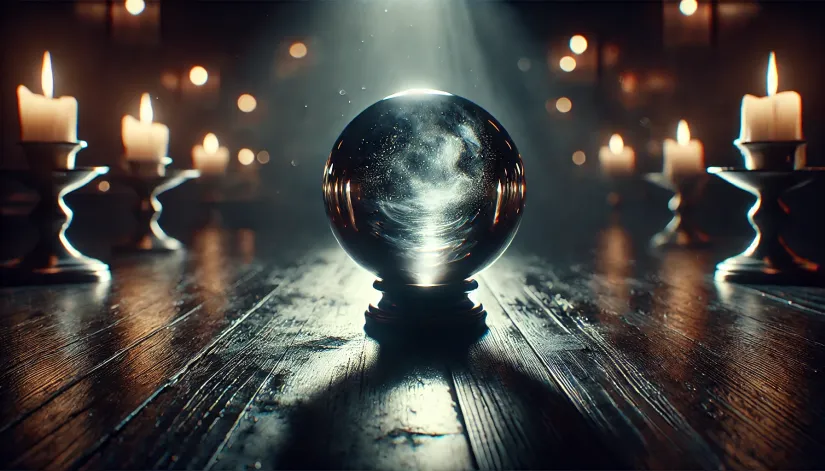
Natural vs. Learned Ability
Many clairvoyants claim that their abilities just appeared naturally—often from a young age. They usually recall having intense dreams and visions or sensing things others couldn’t. It’s like something just happens to them, almost like an extension of their other senses.
However, another school of thought says clairvoyance can develop over time. Even if you weren’t born with it.
According to this theory, clairvoyance is like a muscle—if you work at it, you can make it stronger. Following this belief, many choose to actively practice clairvoyance. Train it. Trying to improve it. Become more mindful and learn to “tune in” to the energy around them.
Meditation may be a good way of doing that. It’s a practice that allows you to quiet your mind and focus inward. This way, you may become more attuned to the hidden energy or messages around you.
Visualization exercises are another practice some focus on to train their clairvoyance skills. What do you need to do? Simply create vivid mental images and practice holding onto them with clarity and detail.
This may help you recognize when you’re receiving actual clairvoyant information versus just your imagination.
Some also suggest using crystals or tarot cards to develop clairvoyance. These tools may help focus the mind and tap into intuitive abilities, acting as conduits for energy or insight. For example, crystals like amethyst or clear quartz can enhance psychic abilities and help you tune into your visions.
Is Clairvoyance Real?
Science, by its very nature, relies on measurable, repeatable results. When it comes to clairvoyance, most researchers agree that reliable evidence is lackluster.
However, there has been some intriguing research into psychic phenomena.
One example is Daryl Bem’s 2011 study. Bem, a psychologist at Cornell University, conducted nine experiments to test for precognition (a form of clairvoyance).
According to his findings, out of the nine experiments, eight showed statistically significant evidence that participants could predict future events.
The study, however, faced intense criticism. Particularly for its methodology (the so-called p-hacking effect).
What is p-hacking? It’s a practice where researchers conduct multiple statistical tests and report only the results that reach statistical significance. As you can imagine, hand-picking results typically lead to false positives. And results look more solid than they truly are.
Not to mention that Bem only conducted nine experiments (a very small sample size for accurate results), and his design may have been flawed from the start (since it allowed unintended biases, including subtle cues or flaws in randomization that could have influenced the participants’ responses).
In fact, one of Bem’s critiques, Eric-Jan Wagenmakers, published his own analysis, concluding that “Bem’s p values do not indicate evidence in favor of precognition; instead, they indicate that experimental psychologists need to change the way they conduct their experiments and analyze their data.”
In 2015, Bam published another paper. This time, it was a meta-analysis of 90 experiments. However, just like his 2011 research, this one was also met with extreme skepticism.
One of the biggest challenges in studying clairvoyance is that it’s difficult to test under controlled conditions. How can you measure someone’s ability to see future events or perceive things happening at a distance?
In a lab, conditions are far from the dynamic environments where many clairvoyants claim their abilities are strongest.
A key example is the work of J. B. Rhine (a psychologist at Duke University in the early 20th century). Rhine conducted experiments using Zener cards, where participants were asked to predict the symbols on cards without seeing them.
While Rhine’s initial results showed some psychic success, following studies failed to replicate his findings consistently. This led many in the scientific community to dismiss Rhine’s research as unreliable.
Proven or not, the simple idea of someone’s being able to predict the future made the U.S. military start its own project in the field: Project Stargate.
This secret military project ran from the 1970s to 1995 and focused on using clairvoyance and remote viewing for intelligence gathering during the Cold War.
The program was shut down after producing mixed results.
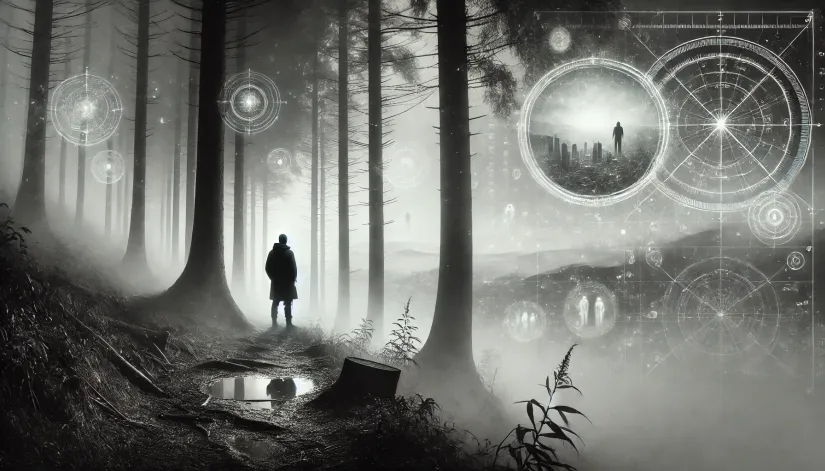
SpookySight’s Take
In Christian traditions, there’s a clear line between what’s considered clairvoyance and what’s viewed as prophecy. Prophecy is a gift from God, passed down through the Holy Spirit (much like the visions seen by prophets Elijah and Daniel).
That’s why many Christians are careful not to associate themselves with practices outside their faith. Especially when it comes to things like psychic readings or clairvoyant predictions.
The Bible does talk about false prophets and warns against being misled by spiritual influences that aren’t divine. So, where do we draw the line? Is there a way to distinguish between a gift from the Holy Spirit and a psychic experience?
When it comes to science, things get even trickier. Some studies hint at the possibility of clairvoyance (like the ones we’ve discussed above). Yet, not everyone’s convinced.
But then, we hear about real-world cases that make us wonder. For example, Noreen Renier, a psychic, helped police solve the 1984 murder of Carolyn Killaby. How did she do that? By providing incredibly specific details about the crime scene.
So, how did she know that? Was it a stroke of luck? Or is there something more at play that we can’t quite explain with science?
At the end of the day, clairvoyance (or prophecy, depending on your perspective) remains a bit of a mystery. Is it a divine gift? A psychic ability? Or just coincidence?
Maybe the answer is somewhere in between, and it’s up to us to keep asking those questions.

